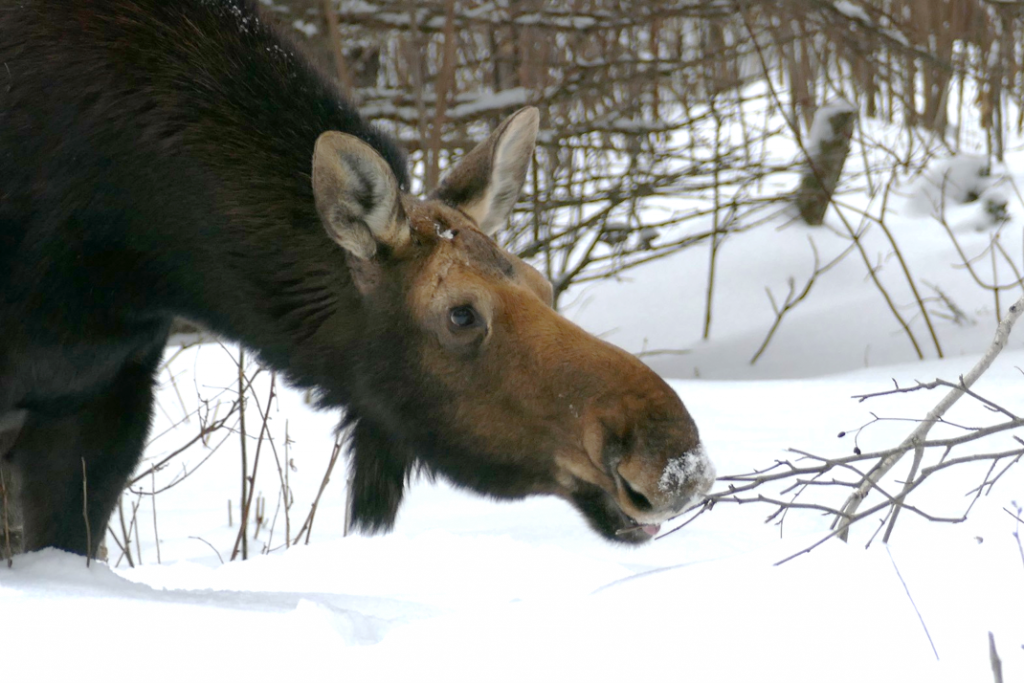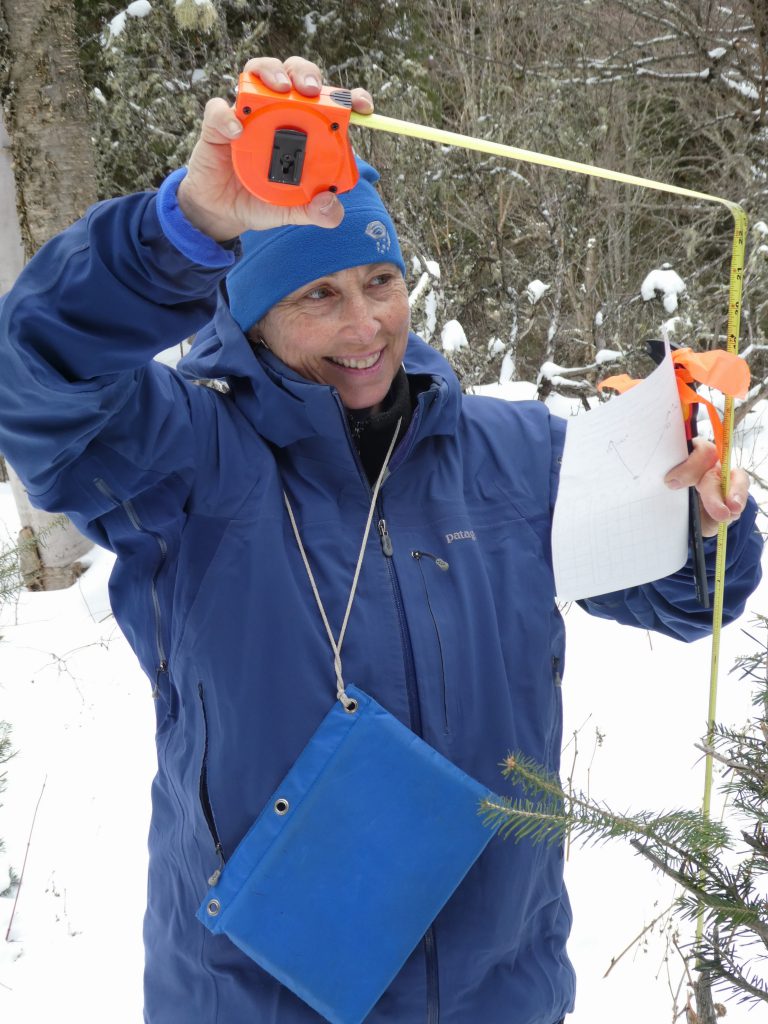
- Teacher Guide
- Student activity, Graph Type A, Level 3
- Student activity, Graph Type B, Level 3
- Student activity, Graph Type C, Level 3
- Grading Rubric
When you eat at a restaurant, do you always order your favorite meal? Or do you like to look at the menu and try something new? Humans have so many meal options that it can be hard to decide what to eat, but we also have preferences for certain food over others. Animals have fewer decisions to make. They have to choose from food options available in their environment. Do animals search for specific food types or eat any food they find?
Scientists who study the ecology of the remote Isle Royale National Park are interested in knowing more about how moose decide which plants to eat. Isle Royale is a large (44 miles long and 8 miles wide) island found within Lake Superior. On the island, wolves are the main predators of moose. The wolf and moose populations have been studied there for over 60 years, making it the longest continuous study of predator-prey dynamics.
In recent years, the wolf population struggled to rebound because there were very few adults reproducing. Without their natural predators, the moose population has increased dramatically, in 2000 there were approximately 500 moose, but since that time the population has grown to over 2,000 moose! Moose are browsers, meaning they eat leaves and needles, fruits, or twigs that are found on woody plants. Having too many moose on the island would take a toll on the island’s plant community. Bite by bite, moose may be chomping away at the forest and changing the Isle Royale ecosystem as we know it.
To try to fix this problem, the National Park Service is working to restore the wolf population by relocating adults from other Lake Superior packs to the island. However, this will take several years and in the meantime moose will continue to have an effect on the plant community. Scientists Sarah, John, and their colleagues realize how important it is to monitor which plants the moose are eating. The scientist team wanted to know whether moose simply eat the plants that they come across, or if they show preference for certain plants.

One thing that could affect moose food preference is the nutrition level of the different plants. In the winter, deciduous plants lose their leaves, unlike conifers that are green all year round. In the winter, moose end up eating the edges of twigs from deciduous plants, but can still eat needles of conifers. Needles are easier for moose to digest and have more nutrients than twigs so the scientists thought moose would seek out coniferous plants, like balsam fir and cedar, even if they were less common in the environment.
Starting in 2004, the scientist team selected 14 sites across the island and started collecting moose poop, also called fecal pellets, at the end of winter. Back in the lab, the fecal pellets were examined closely under a microscope to determine what the moose were eating. Many plants have identifiable differences in cellular structures, so the scientists were able to look at the magnified fragments and record how much balsam fir, cedar, and deciduous plants the moose had been eating.
To understand preference, the scientists also needed to know which plants were in the area that the moose were living. They did plant surveys at the beginning and end of the study to estimate the percent of different woody plants that are in the forest. Because woody plants are long-living, the forest didn’t change too much from year to year.
Once they had the forest plant surveys and the moose diets analyzed from the fecal pellets, they were able to analyze whether moose selectively eat. If a moose was randomly eating the plant types that it came across, it would have similar amounts of plants in its diet than what is found in the forest. If a moose shows preference for a plant type, it would have a higher percent of that food in their diet than what is found in the forest. Moose could also be avoiding certain food types, which would be when they have a lower percent of a plant type in its diet than in the environment.
Featured scientist: Sarah Hoy, John Vucetich and John Henderson from Michigan Technological University.Support for this lesson was provided by the National Park Service with funding from the Great Lakes Restoration Initiative.
Flesch–Kincaid Reading Grade Level = 10.1
Additional teacher resources related to this Data Nugget:
The study and results described in this Data Nugget have been published. If students are curious to know more about the study design and how sites were selected, there is an approachable methods section available in the article:
- Hoy, S.R., Vucetich, J.A., Liu, R., DeAngelis, D.L., Peterson, R.O., Vucetich, L.M., & Henderson, J.J. 2019. Negative frequency-dependent foraging behavior in a generalist herbivore (Alces alces) and its stabilizing influence on food-web dynamics. Journal of Animal Ecology.
There have been several news stories about this research:
Website with more information on the Isle Royale Wolf-Moose Study, including additional datasets to examine with students.
